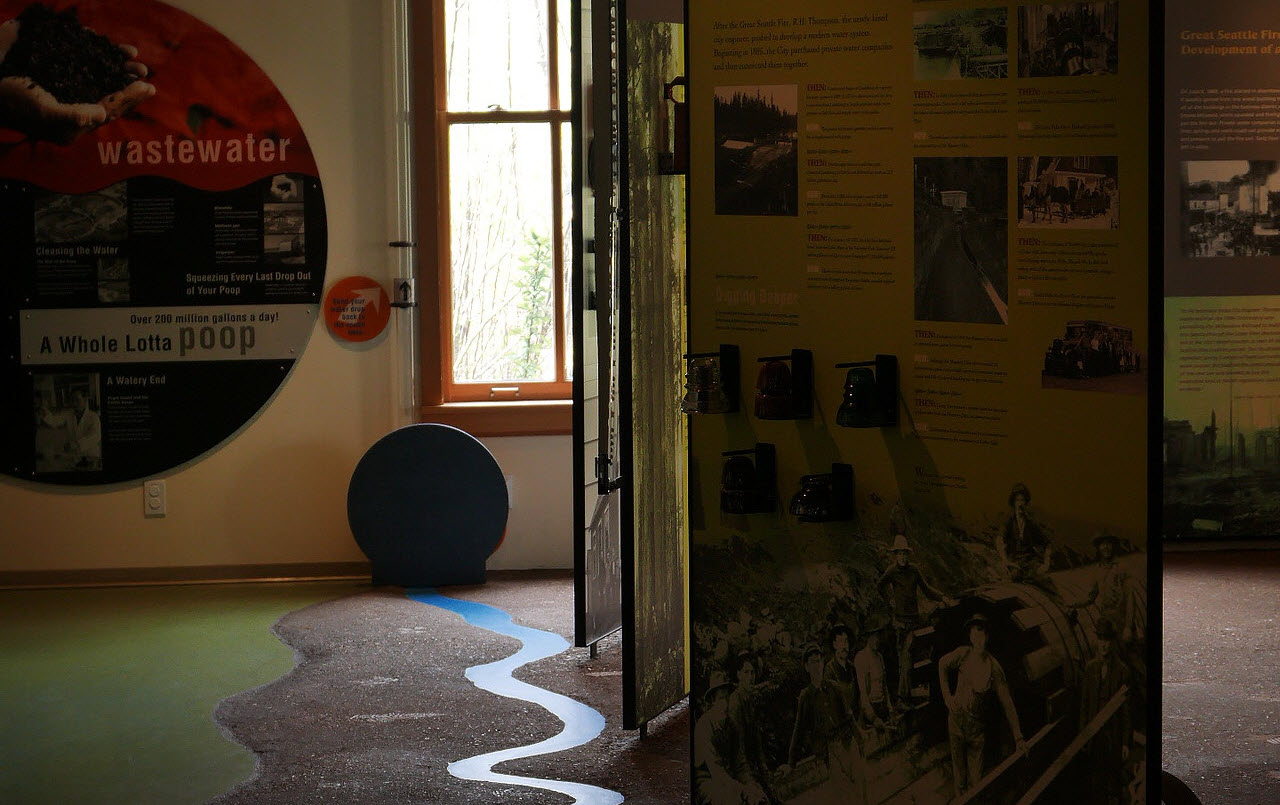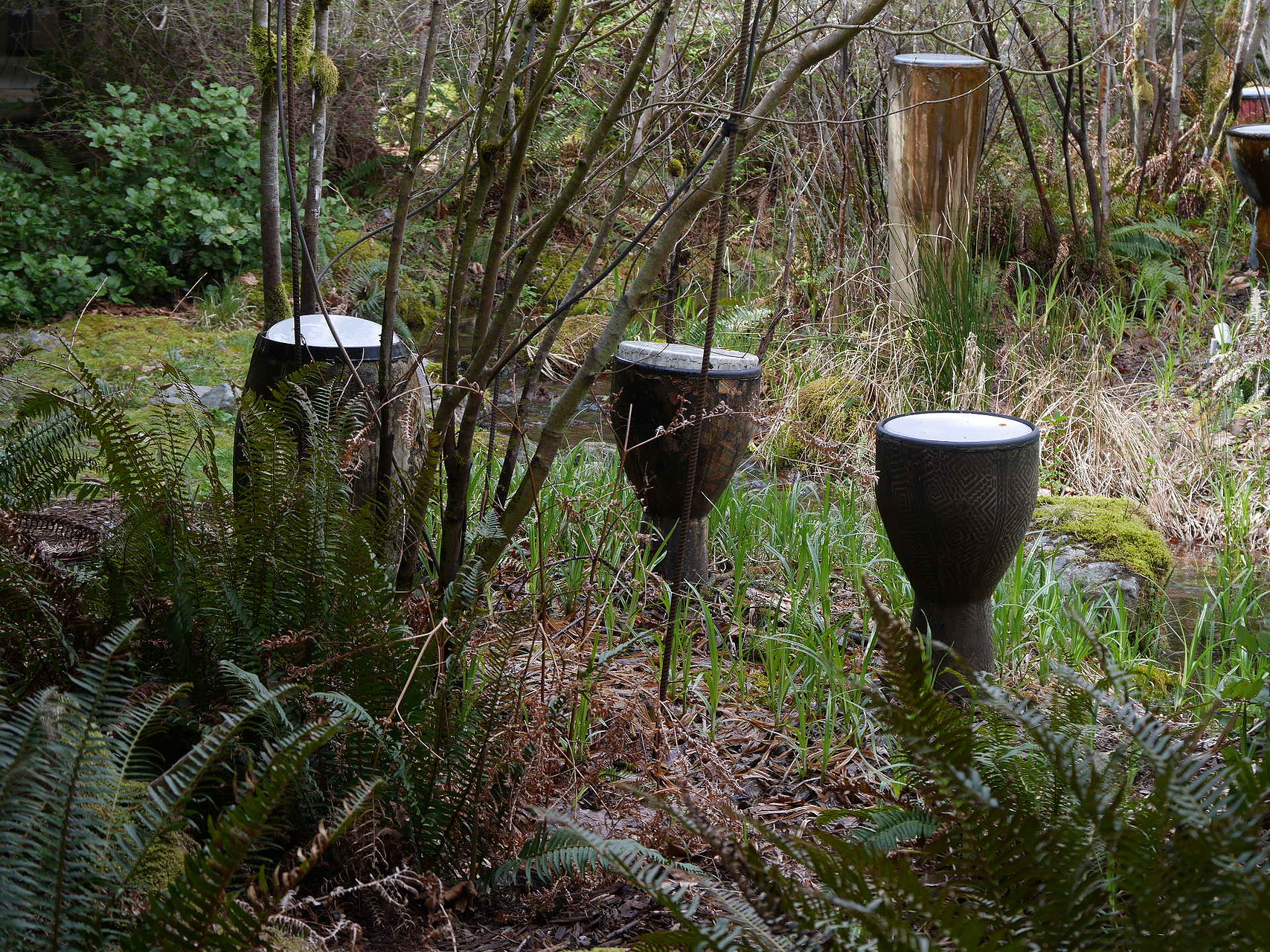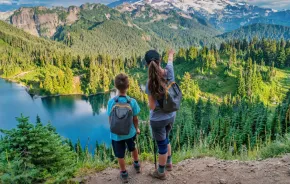
My 3-year-old son loves playing with water. Whether it's to build a "river" in his dirt pile or filling his water pistol to spray his sister, he can't resist a garden hose when he sees one. The problem — as most people in the western United States know — is that water is in short supply some years. He knows wasting water is bad, and to my delight, a trip to the Cedar River Watershed Education Center near North Bend helped him comprehend how the water cycle works and appreciate his role in conserving water.
The watershed, owned by the City of Seattle, provides clean drinking water to more 1 million people in the greater Seattle area. The Education Center facility is part ranger station/part gift shop and houses the "Water is Magic" exhibits: a collection of interactive exhibits, meant to appeal to a wide age range of visitors, which illustrate the important role the watershed plays in supplying clean water to people in the Seattle area.
I was particularly taken with an exhibit that asks you to be a water manager and consider the actions you would take in the event of a wet winter as well as a very dry winter. How would you manage reservoir levels in the winter if there wasn't much snow in the mountains? What if there were torrential floods? These are real decisions utility managers have been making this past winter, and I wanted to see if my son might be interested in tackling the quiz with me.
He wasn't, though I'd guess a child closer to 8 or 9 would appreciate the concepts. Staff on site can guide kids through some of them. Facility coordinator Christopher Holland said at this point, the outlook is still good for the area's water supply this summer. “Snow pack will be a record low,” he said, “but with the rain, our overall precipitation is about the same level. The water managers did a very good job of holding that rain we got in our reservoirs.”

Ping-pong water fun
Meanwhile, my son had discovered the exhibits for younger kids. He was busy feeding numbered ping-pong balls through a network of vacuum-assisted tubes running through the exhibits meant to help younger visitors understand where water comes from and the many places it can go when it falls from the sky: consumed by animals or plants, entering groundwater, flowing into rivers, etc. Visitors can pick up a pencil and paper and track their ball (aka a water drop) as it moves through the water cycle.

I reined him in and suggested we try just following one ball: No. 32. With paper in hand, we watched the ball travel across the tube to fall as rain. He opted to have his waterdrop go into the river and we watched the ball move accordingly.
When we returned No. 32 to its starting bin, he could tell me that rain came from clouds, clouds came from the ocean, and rain makes the plants and trees and flowers grow. More importantly, if he used up all the water, the animals wouldn't have any.
The exhibits at the Education Center focus not only on water management but also on the historical and cultural significance of the area. On a nice clear day, head out to the deck and take a peek through the binoculars at the hikers dotting Rattlesnake Ledge in the distance.
Rain drums and more

There are number of other engaging activities at the Cedar River Watershed Center.
Rain drums: Outside the Center's front doors is a collection of rain drums that beat out an almost regular rhythm thanks to a steady trickle of water feeding the percussions. It provides a calming scene for young and old alike.
Explore: The Center has a limited number of young explorers' backpacks available for checking out that are complete with notebooks, field guides, binoculars and more to get to know the wildlife in the area.
Watershed tours: Seattle Public Utilities recently made its 2015-2016 Cedar River Watershed Programs and Tours available for the public to sign up and experience, featuring more than 100 tours and events through April 2016. Highlights include:
- See the actual watershed on a 2.5-hour tour (a shorter one-hour option is available for families), or bring the young ones on several junior and knee-high naturalists tours planned through the summer.
- Bring older kids on a jaunt to explore local forest ecology and old-growth forests. Costs for tours and programs range from $5 per child to $15 per person. Check the website for specific dates, prices and special instructions.

Hikes from and around the Cedar River Center
There are also many terrific hikes from the center, or a short drive away.
Rattlesnake Lake: The Cedar River Watershed sits overlooking Rattlesnake Lake, a gorgeous and serene body of water guarded by Rattlesnake Mountain to the west. From the Center, it is a .75-mile

walk on the Lake Trail to the lake's picnic area. The trail is bike and stroller-friendly. My son did the walk – albeit with some complaining. Pack a picnic and spread out on the lake's pebbly shore. Bring a kite too, and take advantage of the open breeze. Grilling is allowed as is swimming but no lifeguard is on duty. At its deepest when the lake is fullest, it is 50 feet, said Holland. Swimmers share the waters with man-powered and electric motor boats as well.
Rattlesnake Ledge: Each child's hiking ability is different, said Holland, and older kids may be able to scale the 4-mile round-trip hike (with 1,200 feet elevation gain) up to the ledge, with views into the watershed. Find a description and directions on the WTA site.
Snoqualmie Falls: The official distance is listed as 1-mile round trip with a 370-foot elevation gain. I honestly don't think we covered even this on the small trek from the parking lot to the falls overlook. On years with heavy rain and snow fall, the falls are particularly awesome. But even on drier seasons such as the one we're in, it is still a breathtaking sight. Find directions on the WTA site.
Talapus Lake: The trail to Talapus Lake is 4 miles roundtrip with an 800-foot elevation gain. We did this hike with our then 2-year-old in the kiddie backpack. Give yourself plenty of time for this hike because you'll want to stop and dip your toes in the lake upon arrival. We enjoyed the views and some refreshments on the water's edge before turning back. Those with bigger kids could go one more mile in (and another 500 feet up) to reach Olallie Lake. Find more description and directions on the WTA site.
Franklin Falls: This dramatic waterfall hike is an easy 2-mile round-trip hike that our 3-year-old recently completed. On his own. Proudly. The trail follows the water and gains about 400 feet because you reach the falls. In past years, heavy snowmelt meant you couldn't get too close to the falls, but this year's drought allows for hikers to carefully scale the wet rocks down to the bottom of the falls to enjoy the sight up close and enjoy a quick picnic. Little ones love tossing rocks into the moving water. Find more description and directions on ParentMap's waterfall hike article.
If you go ...
Cost and hours: The Cedar River Watershed Education Center is open Tuesdays through Sundays. From April through October, open hours are 10 a.m.–5 p.m. Winter hours (November to March) are 10 a.m. To 4 p.m. Closed Mondays and holidays. Note: Gates to the Center are open every day from 6 a.m. to dusk.
Location: From Interstate 90, take exit 32. Continue right on Cedar Falls Road for 4 miles. The Center is located at 19901 Cedar Falls Road S.E., which is near the end of the road past Rattlesnake Lake on the right and Iron Horse State Park on the left.
Tips: On warm summer weekends, the parking lot can fill up quickly. Get there early. Portable restrooms are available in the picnic area of the lake but there is no running water. The Education Center does have public restrooms as well as water fountains. The restrooms are open 9 a.m.–5 p.m.











